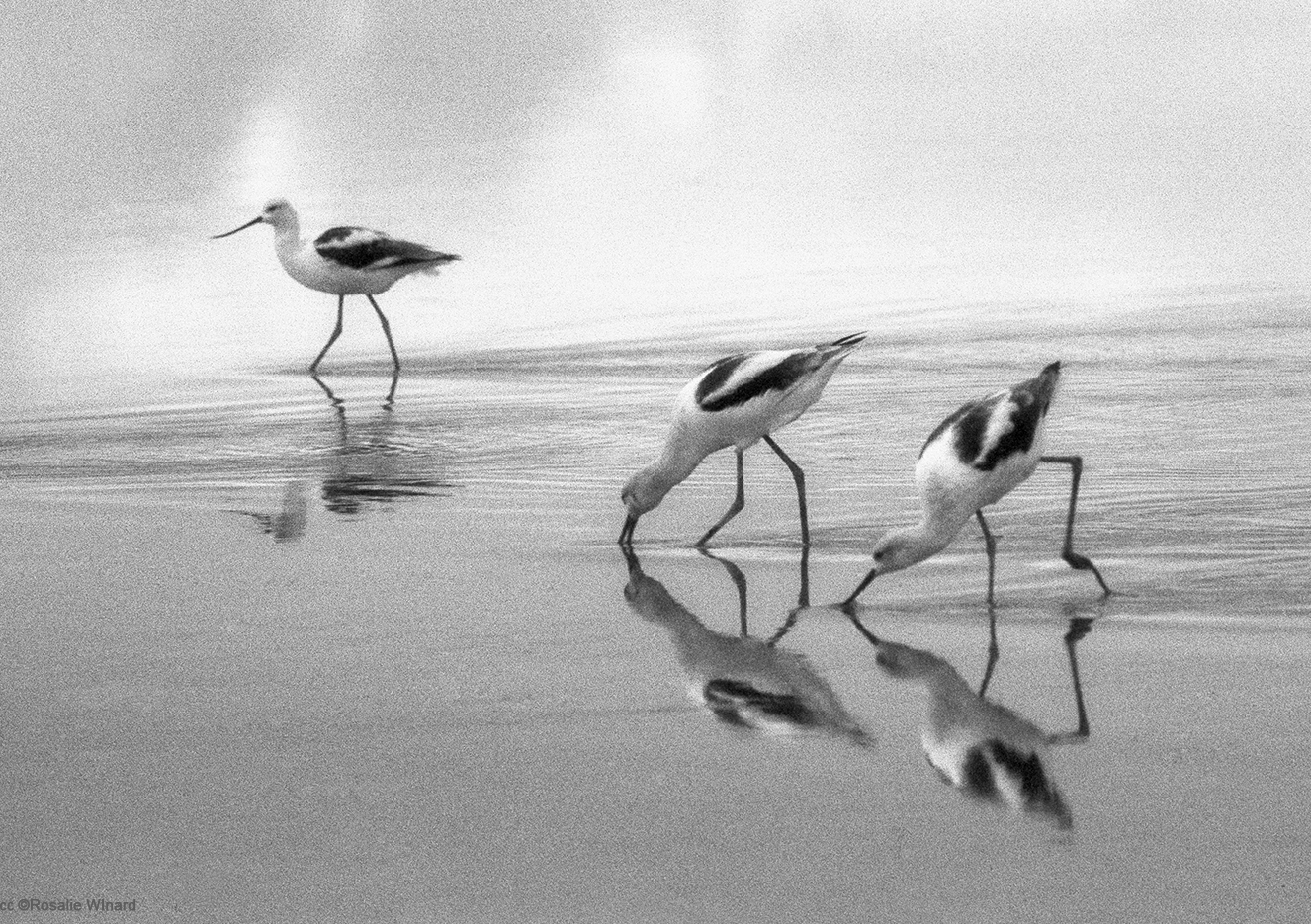American Avocets’ Range Imperiled By Climate Change
As the climate changes, this species could lose ground in its breeding range but gain wintering ground.

American avocets feeding at Bear River Migratory Bird Refuge in Bear River Bay, Great Salt Lake, Utah. Photo by Rosalie Winard
These American avocets are using their elegant, upturned bills to sweep the surface of Utah’s Great Salt Lake for insects. Here, about 250,000 American avocets—more than half the population—have been counted along the lunar landscape-like shore.
“The birds were feeding, and it was just this quiet, still day,” says photographer Rosalie Winard, who began capturing birds at Great Salt Lake on black and white infrared film in 2002. “That was one of the pictures that helped me fall in love with the lake.” (You can see more of her images in Wild Birds of the American Wetlands.)
American avocets are one of 314 North American bird species that could lose more than half of their current geographic range because of climate change, according to research released last week by the National Audubon Society. (Hear more about the report in this recent SciFri segment.)
Using population data on nearly 600 avian species and several climate scenarios from the International Panel on Climate Change, Audubon scientists modeled how current ranges might shift over the century with rising temperatures and evolving precipitation patterns. While some species might expand to new areas, others could lose ground.
American avocets’ core nesting areas, which are “scattered in the West but centered chiefly in the northern Great Plains,” may “contract drastically,” according to Audubon’s website. On the other hand, “areas of suitable climate in winter, currently concentrated in the southern U.S., are forecast to shift northward somewhat and to increase overall.”
The report is “a wakeup call to figure out which species to pay attention to, and it gives us some sense for where we might take action to protect them,” says Gary Langham, the lead researcher and Audubon’s chief scientist.
The report doesn’t focus on how climate change could affect bird habitats such as Great Salt Lake. But other research suggests that climate change could alter the lake and its surrounding wetlands, which many shorebirds, waterfowl, and wading birds use for breeding, refueling during migration, and in some cases wintering, according to John Cavitt, a zoologist at Weber State University who studies birds on Great Salt Lake.
The lake is currently at its lowest level since the 1960s, according to Winard. Increasing summer temperatures could lead to higher rates of lake water evaporation, and changes in precipitation patterns could result in less recharging from snowmelt, further contributing to lower lake levels, wrote Cavitt in an email. If the climate models he’s studied are correct, he writes, “the bottom line is that we will see a contraction of wetland habitat that is key to millions of migratory birds that use Great Salt Lake every year.”
But perhaps there’s room for tempered optimism: Historically, shorebirds and waterfowl populations increase dramatically when conservationists, including hunters, put management practices into place, says Langham. “When you give nature half a chance, it can respond.”
*This article was updated on September 16, 2014 to reflect the following corrections: The second caption identified Great Salt Lake as an UNESCO World heritage site, but it is not one. Also, the article incorrectly stated that half the American avocet population breeds along the shore. Not all of those birds breed there (they might be stopping to refuel).
Susan Cosier is a writer and editor who covers science, health, and the environment. She is a Midwest correspondent for OnEarth.org.